Adapting participatory epidemiology to estimate the incidence of human diseases in Moroto District, Karamoja, Uganda
Livelihoods
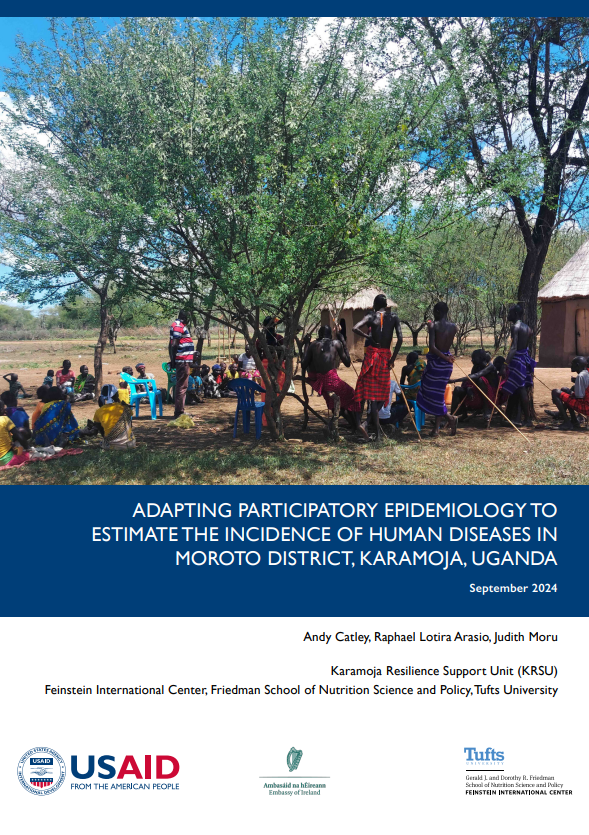
Adapting participatory epidemiology to estimate the incidence of human diseases in Moroto District, Karamoja, Uganda
This study explored the use of participatory epidemiology (PE) to estimate the annual incidences of human diseases in Karamoja, Uganda, with emphasis on diseases associated with water. Adapted PE methods were used successfully to estimate disease incidences in young children and adults, and revealed a rich knowledge on the clinical signs and causes of diseases. The report concludes that PE could be useful for overcoming some of the spatial limitations of the health surveillance system in Karamoja, and the temporal limitations of bi-annual food security and nutrition assessments.
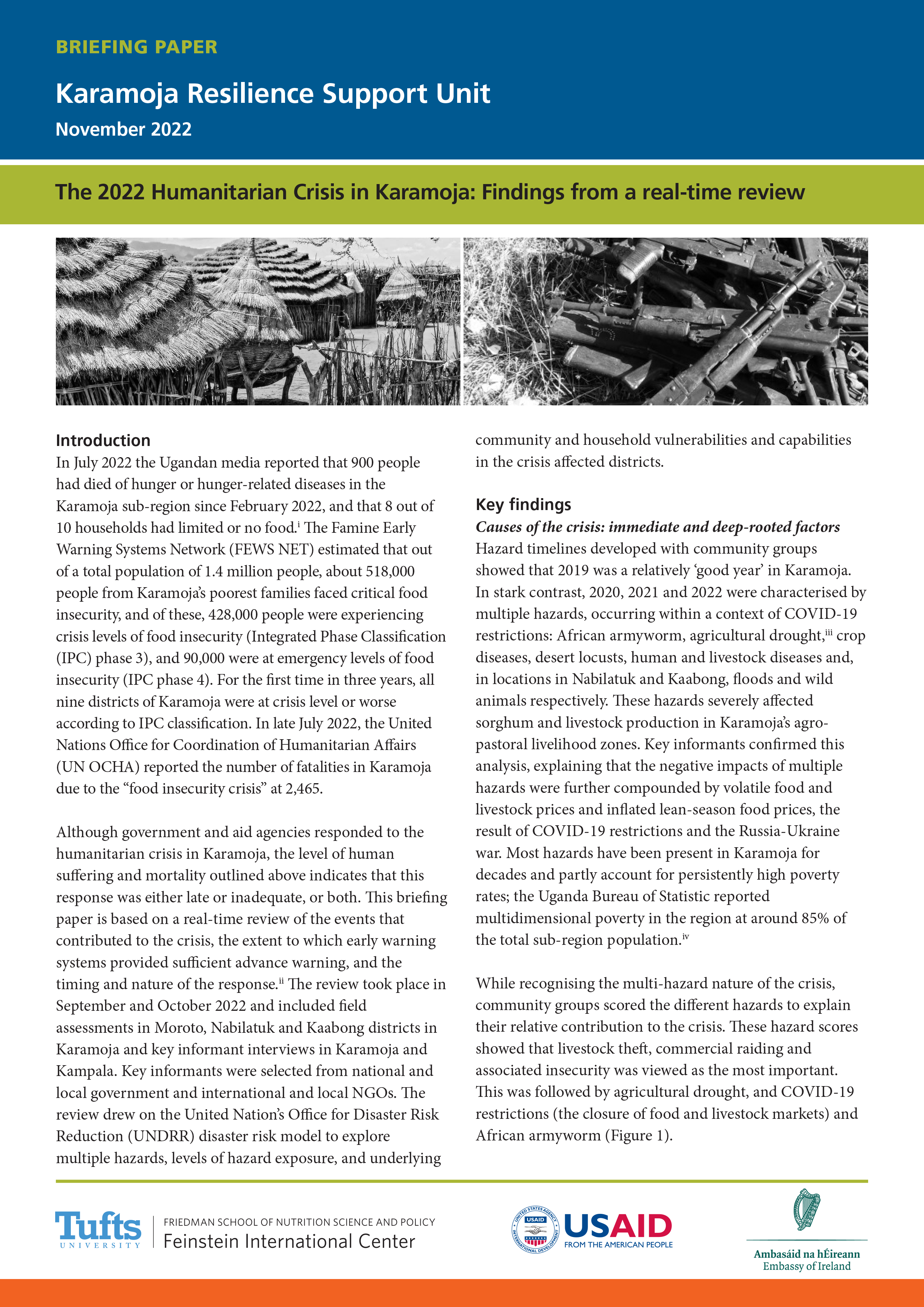
The 2022 Humanitarian Crisis in Karamoja: Findings from a real-time review
In July 2022 the Ugandan media reported that 900 people had died of hunger or hunger-related diseases in the Karamoja sub-region since February 2022, and that 8 out of 10 households had limited or no food.i
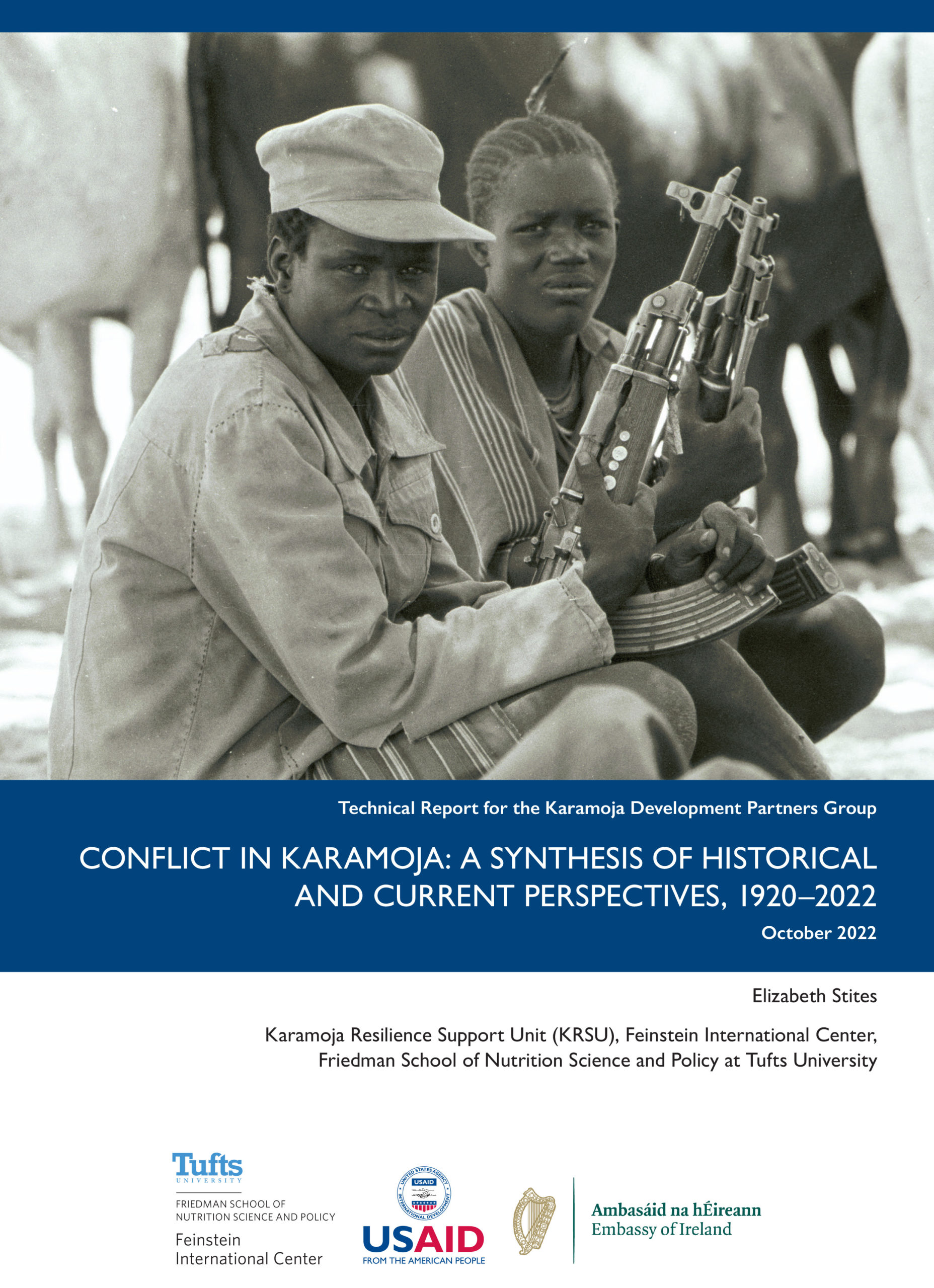
Conflict in Karamoja: A Synthesis of Historical and Current Perspectives, 1920-2022
This knowledge synthesis focuses on violent conflict in the Karamoja sub-region of northeastern Uganda. While violence and conflict both can and do take many forms, this synthesis takes as its focus the phenomenon of cattle raiding and associated violence. This knowledge synthesis briefly describes the concept and role of cattle raiding within pastoral societies in East Africa and the Karamoja Cluster and then examines different historical periods and experiences of violent conflict associated with cattle raiding within the Karamoja sub-region.
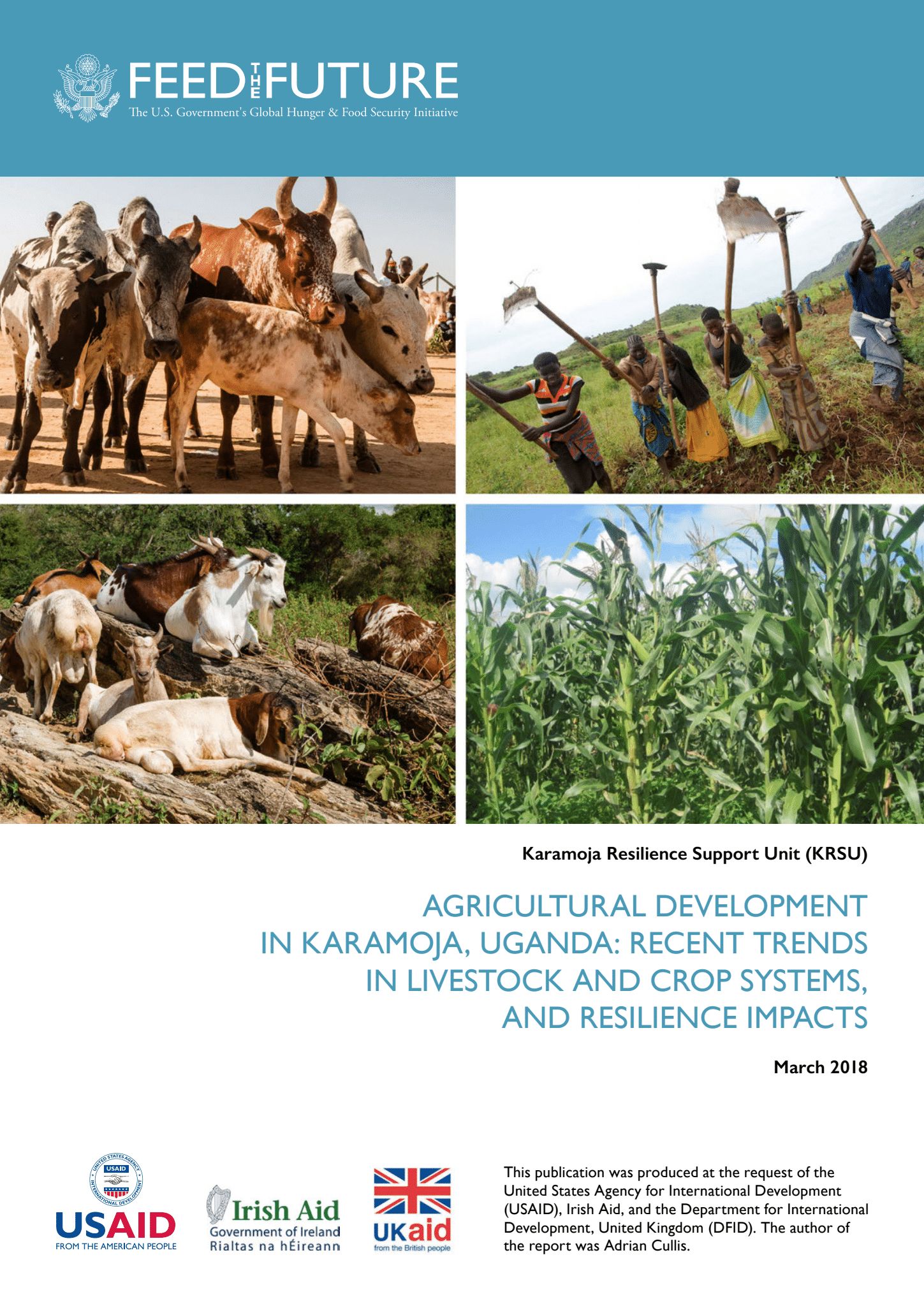
AGRICULTURAL DEVELOPMENT IN KARAMOJA, UGANDA: RECENT TRENDS IN LIVESTOCK AND CROP SYSTEMS, AND RESILIENCE IMPACTS
This report is a review of agricultural development trends in the Karamoja sub-region of northeast Uganda. The review covered both crop farming and transhumance livestock management and examined agriculture at the levels of both policy and programming.
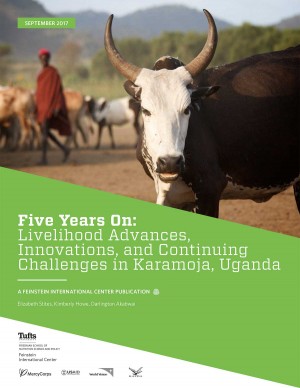
Five Years On: Livelihood Advances, Innovations, and Continuing Challenges in Karamoja, Uganda
The report is part of an evaluation of the Growth, Health and Governance Program, that measures changes in product service utilization and livelihood development and pragmatic innovations in Karamoja region.
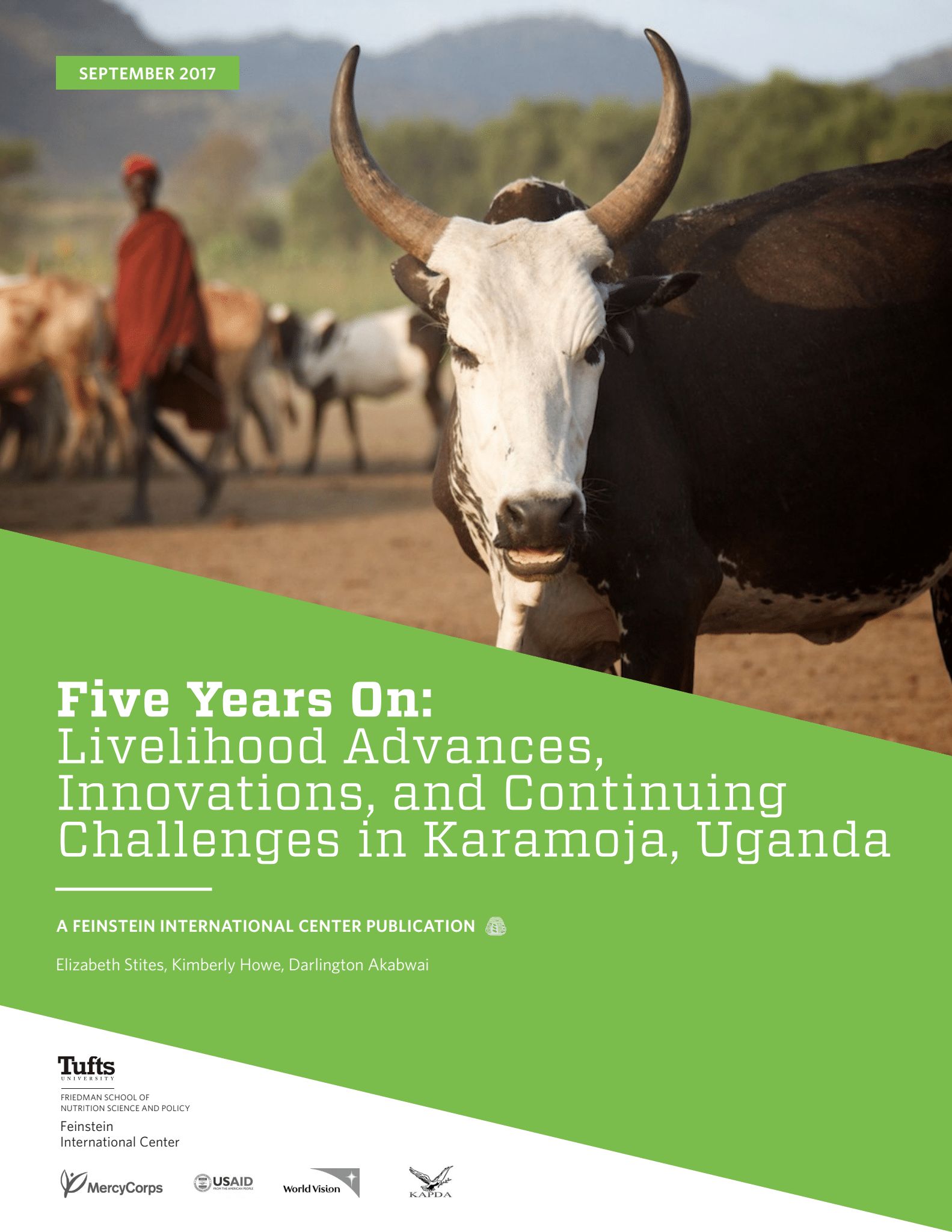
Five Years On: Livelihood Advances, Innovations, and Continuing Challenges in Karamoja, Uganda
A quantitative analysis of a representative group of villages indicates that there has been a widespread increase in the utilization of services as well as improvement to well-being for residents of northern Karamoja since 2013
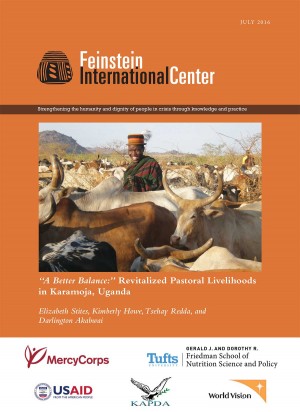
A Better Balance: Revitalized Pastoral Livelihoods in Karamoja, Uganda
Livelihoods in Karamoja continue to change as security improves; this includes a revitalization of pastoral production for some households. This report details the findings from research undertaken in February and March 2016 in four districts of Karamoja aimed at better understanding the current patterns of pastoral and agro-pastoral production in the region.
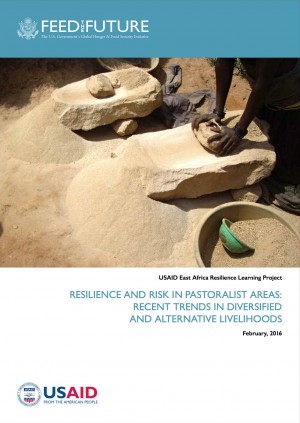
Livelihood diversification trends, risks, and programming implications
This study explored recent trends in diversification by East African pastoralists, the factors that drive their choices, and the potential short and longer-term consequences of their decisions. It considered the risks and costs of diversified and alternative livelihoods, as well as the benefits. The report presents findings from three case studies from Karamoja in northeastern Uganda, the Borana region of southern Ethiopia, and the Garissa District of northeastern Kenya. It includes policy recommendations regarding land tenure, local value addition around livestock production, and investments in sustainable natural products, local infrastructure, and urban/peri-urban planning. Further recommendations address nutritional issues, the promotion of regional trade, and growing demands for education, training, and business development skills.
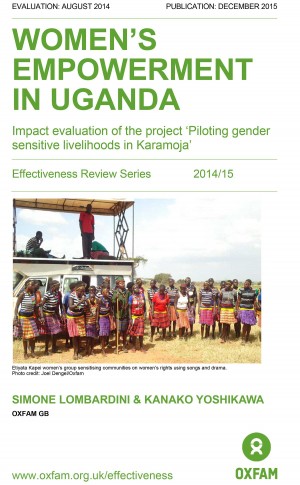
Women’s Empowerment in Uganda: impact evaluation of the project ‘Piloting gender sensitive livelihoods in Karamoja’
The Effectiveness Review took place in Kotido district, (Karamoja, Uganda) in August 2014, and set out to evaluate the impact of the project ‘Piloting gender sensitive livelihoods in Karamoja’ on dimensions of women’s empowerment in Karamoja. Project activities were implemented by Oxfam and partner organisations in the Kotido and Kaabong districts, Karamoja region, between July 2011 and March 2014.
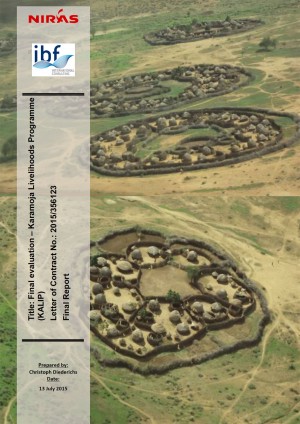
Final evaluation – Karamoja Livelihoods Programme
The Karamoja Livelihoods Programme (KALIP) was a 4-year programme (2010-2015) to protect and enhance incomes and food security of the agro-pastoral communities in Karamoja and support them in building up their productive asset base. The global objective of the final evaluation mission was: “to make an overall independent assessment about the past performance of KALIP, paying particularly attention to the impact of the actions against its objectives.” The overall objective of KALIP was: “to promote development as an incentive to peace in the region by supporting agro-pastoral production livelihood alternatives and income generation opportunities for the people of Karamoja.” The Supervising Authority for KALIP was the Office of the Prime Minister (OPM) and the donor was the European Union.
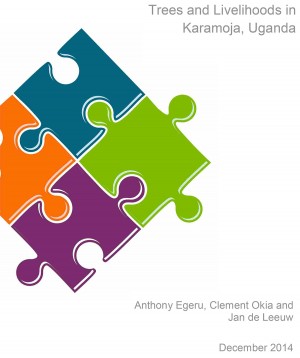
Trees and Livelihoods in Karamoja, Uganda
This report presents results of a rapid desk review of academic and grey literature on the evidence relating to trees and livelihoods in Karamoja a region in north eastern Uganda. The review identified the range of problems in the Karamoja sub-region; benefits of trees to people and communities living in Karamoja; the role of trees in resilience building; role of trees in agricultural production, traditional knowledge of trees in Karamoja; threats to trees, drivers of development in Karamoja; tree-based initiatives in the sub-region; and opportunities for action research in Karamoja.
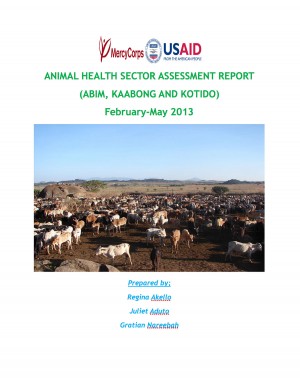
Animal Health Sector Assessment Report (Abim, Kaabong, and Kotido)
The Animal Health sector assessment was conducted by the team of 3 members; Gratian, Juliet and Regina in Abim, Kotido, Kaabong and outside Karamoja in Lira, Soroti and Mbale to understand the systemic functionality; major players, development actors, support functions, loopholes and challenges, actor/agency relations, drug supply chain as well as the formal and informal rules governing the sector.
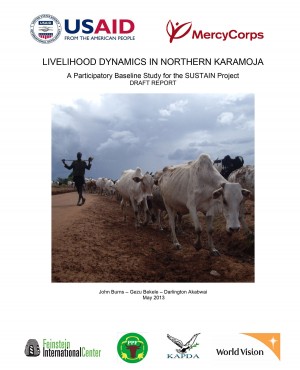
Livelihood Dynamics in Northern Karamoja: A Participatory Baseline Study for the SUSTAIN Project
This report documents the findings of a livelihoods assessment carried out as part of the USAID funded Sustainable Transformation in Agriculture and Nutrition (SUSTAIN) project being implemented by Mercy Corps and partners in the Karamoja sub-region of Northeastern Uganda. The overall goal of the SUSTAIN project is to promote peace and food security through three complementary strategic objectives aimed at (1) strengthening livelihoods, (2) improving nutritional outcomes for children under two and (3) building local capacities for conflict mitigation.The project is being implemented in three districts of Northern Karamoja, Abim, Kaabong and Kotido. The objective of this particular study is to inform implementation and collect baseline impact indicators for the activities under objective # 1. Under this objective (livelihoods strengthening)the project aims to improve productivity, market access, marketing behaviors and the overall business environment.
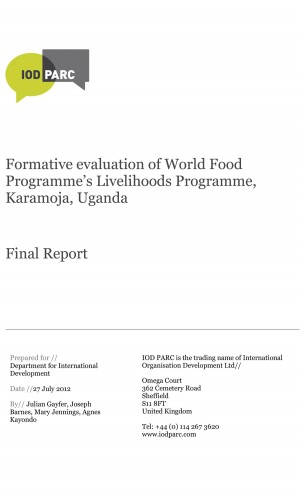
Formative evaluation of World Food Programme’s Livelihoods Programme, Karamoja, Uganda: Final Report
The purpose of this evaluation is to provide an independent assessment on the merit and worth of the World Food Programme’s (WFP) strategy on livelihoods recovery in Karamoja1. The object of the evaluation is the DFID funded WFP Livelihood Programme (2010 -2013); an element of the Government of Uganda (GoU) led second Northern Uganda Social Action Fund (NUSAF 2). This formative evaluation looks at the effectiveness, efficiency, relevance and the sustainability of the approaches that have been adopted by WFP and its partners.